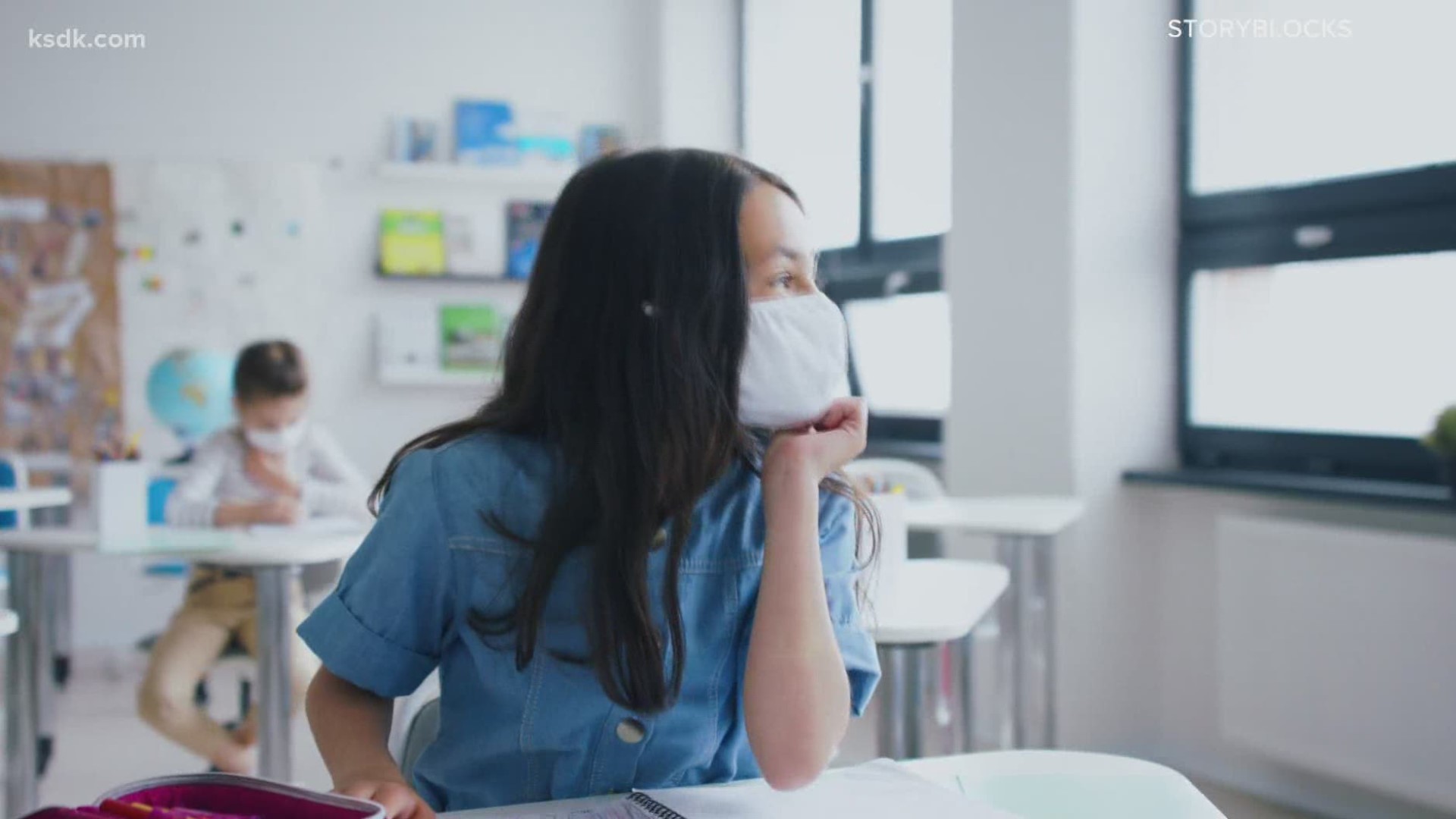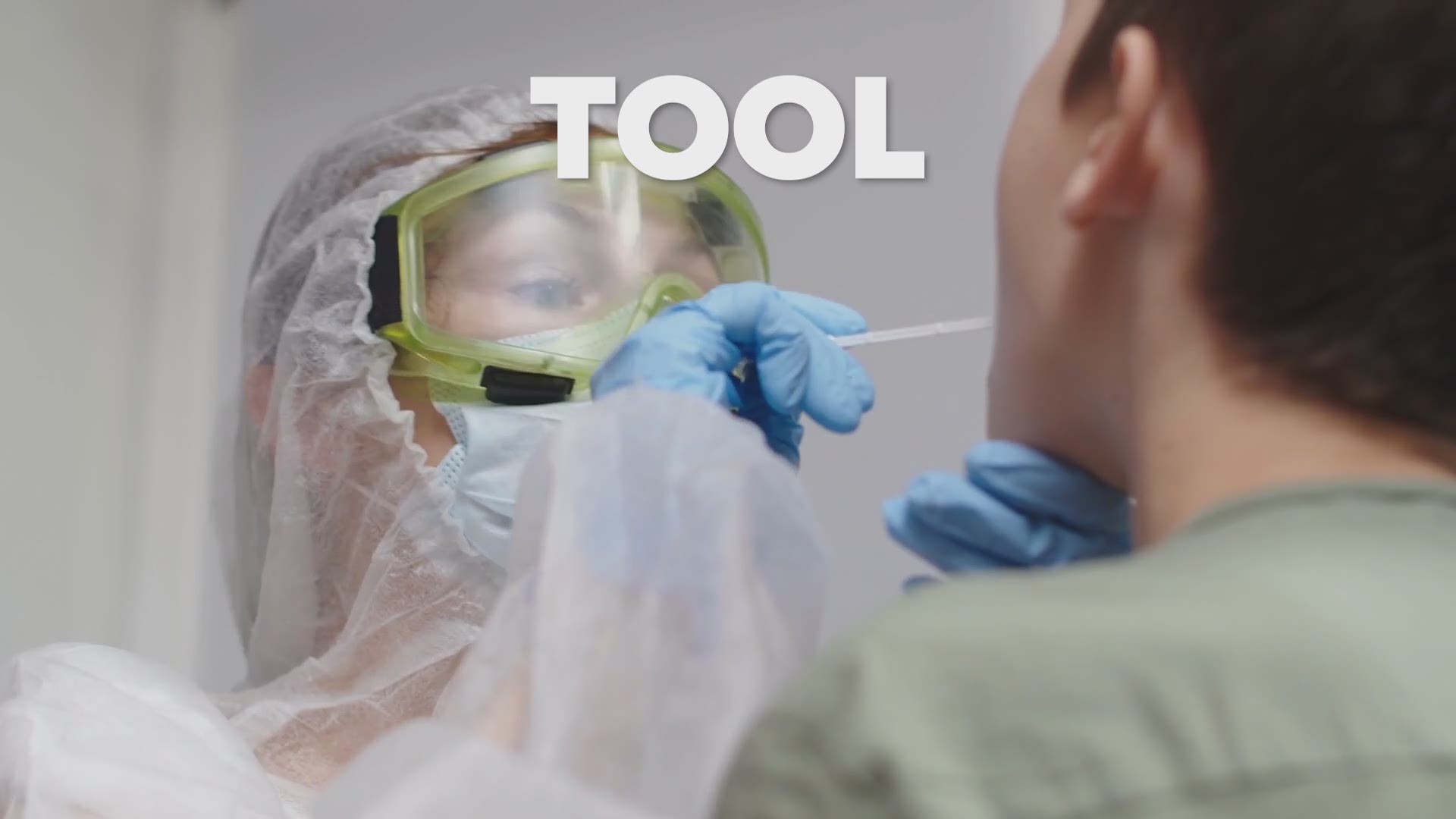ST. LOUIS — Children share a lot — snacks, toys at playtime — but not the coronavirus, according to current data.
“It's not entirely clear why that they have been, not the drivers of this infection, as they have in other infections. But part of it at least relates to the fact that they are less likely to acquire the infection in the first place," said Dr. Rachel Orschlen, a pediatric infectious disease specialist with Washington University and St. Louis Children’s Hospital. “What we know to date is that it seems like when kids are infected, they're primarily being infected by other adults.”
She also said that while there have been cases of serious illness and death in pediatric cases, children are usually only mildly sick. However, their symptoms — headache, runny nose, cough, congestion, and even vomiting or diarrhea — don’t look the same as those presented in adults. Dr. Orschlen said children usually don’t have a fever.
“The difficulties about this is the symptoms have overlapped with pretty much almost any illness of childhood,” she said.
She said pediatricians are still working on guidelines to determine when it’s appropriate for a child to receive a COVID-19 test.
Research shows the virus can be spread by adults who aren’t showing any symptoms, but there’s not much evidence of that in children. The American Academy of Pediatrics cites that and evidence that schools are good for the well-being of children when they encouraged schools to reopen in person for the fall semester.
“We really do want to focus on bringing kids back to in-person schooling. That's critically important," Dr. Orschlen said. "We know there are substantial risks for children being out of school and then we can do some common-sense things to reduce the chances that we'll have spread.”
A positive sign? Data from countries where schools reopened show they haven’t been hot-spots.
“I think we can look at that information to provide some reassurance that with the appropriate strategies, we won't see large outbreaks in schools, but we will have to be vigilant,” said Dr. Orschlen.
That means pop quizzes won't be the only surprises coming this school year. Students should get ready for health screenings, physically-spaced-out groups in both classrooms and cafeterias, and possibly ditching the perfect attendance awards.
“Really, we're going to have to be vigilant when a child has any symptoms of illness, that they be kept out of school until we can exclude the diagnosis of infection with another coronavirus,” she said. “I think people are going to need to engage with their primary care providers a lot more on getting back to school in a way that we haven't done in the past, where we may say, 'Well, once you have not had a fever for 24 hours, you can come back to school.' That's probably no longer going to be comfortable.”
If you’re worried about how your little one will handle things like extra hand-washing, social distancing and mask-wearing, Dr. Orschlen has this advice: start practicing now.
“I think it's important that parents normalize some of these things that are going to be necessary to keep everybody safe and healthy, know kids are extremely adaptable. And if we teach them to do certain things and emphasize the importance of doing those things to keep them healthy and to keep other people safe, I think they're going to really accept that.”
While it’s a good idea to introduce even the youngest kids to the concept of mask-wearing, most regulations only require kids older than age 9 to do so.
“Thinking developmentally about children and their ability to comply and use a mask appropriately and not do things like chew on their mask or trade their masks or handle their masks. You know, we want to think about a cut off for that. And then we do know that younger children are less risk of spreading this infection. And so I think it makes some sense, because the masks are primarily meant to protect you from spreading the infection to someone else, that we focus on the older kids,” said Dr. Orschlen.
She added that younger children tend to stay with the same group throughout the school day, while middle- and high-school students travel to different classrooms, which could make them more likely to spread the virus.
When schools do reopen, Dr. Orschlen stressed the importance of flu vaccines to help keep a healthy school environment and equipping teachers with the resources they need to protect themselves on the job.
“We are going to need to be prepared to protect the adults in the environment with appropriate personal protective equipment and also screening and other strategies, mitigation strategies such as the distancing to reduce chances the adults in the environment who may be at high risk for acquiring this infection are protected as well.”
MORE CORONAVIRUS COVERAGE


